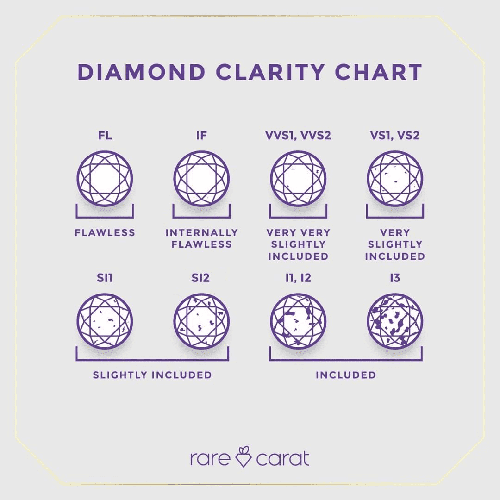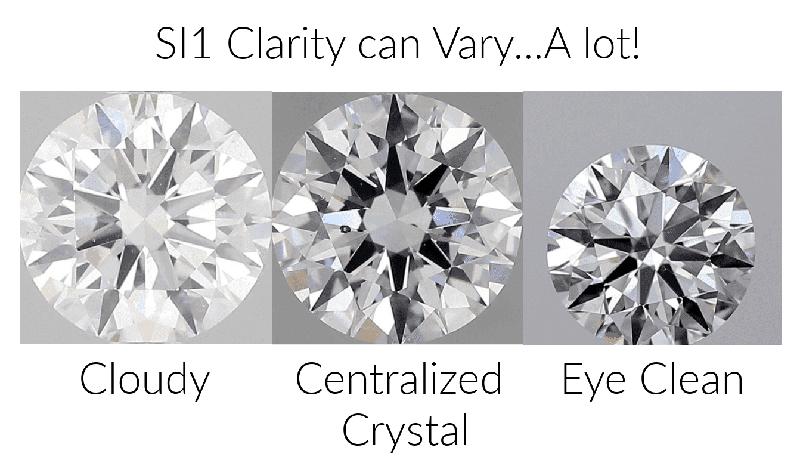What is an SI Diamond?
An "SI" diamond refers to a diamond with "Slightly Included" clarity. The Gemological Institute of America (GIA), one of the foremost authorities on diamond grading, classifies diamonds based on their clarity, among other factors like color, cut, and carat weight.
First, what exactly is diamond clarity?
Let’s start with the basics.
It is well known that no two diamonds are the same. Every natural diamond is made up of carbon, however while the rough stone was forming and pushing its way up through the depths of the earth, particles from other minerals and smaller diamonds (wicked cool) make their way inside the formed structure. This natural occurrence is what the diamond world calls inclusions.
If the characteristics that formed are fully inside the stone it is called an inclusion and if the characteristics are on the surface of the stone it is called a blemish. Inclusions and blemishes collectively are termed clarity characteristics. Clarity grades are determined by the absence of these characteristics. The fewer inclusions=the higher the clarity grade. The chart below pretty clearly shows this determination.

As the chart exhibits, SI is an abbreviation for “slightly included” and has two subcategories.
What does “slightly included” mean though?
SI diamonds have inclusions that are noticeable for a trained grader to see under 10x magnification. As opposed to the VVS1, VVS2, VS1 and VS2 categories, which have inclusions that are more minor and less noticeable to a trained grader to see under 10x magnification, and the I1,I2 and I3 categories which have inclusions that are obvious to a skilled grader under 10x magnification.
A grader will determine if the stone is SI1 or SI2 based on the number of inclusions and the prominence of their placement within the stone.
Even with a small amount of diamond knowledge most consumers and potential diamond buyers are aware that a stone with less inclusions is typically more valuable, all other factors being equal, and vice versa. For some buyers an SI diamond could be the rare unicorn. What do I mean? Bottom line, depending on the size and location of the inclusions, SI stones can definitely give you more bang for your buck.

Ready to explore this category of stones? If so, SI1 diamonds and SI2 diamonds could be found right here. Happy shopping!

